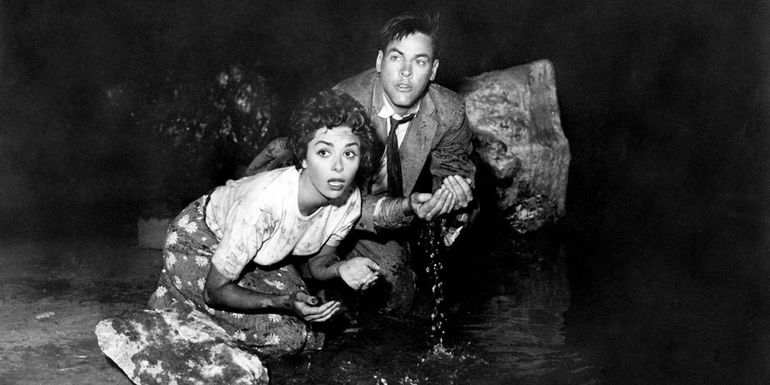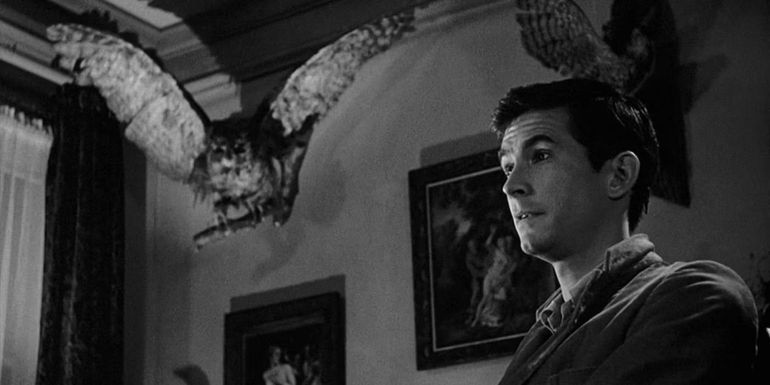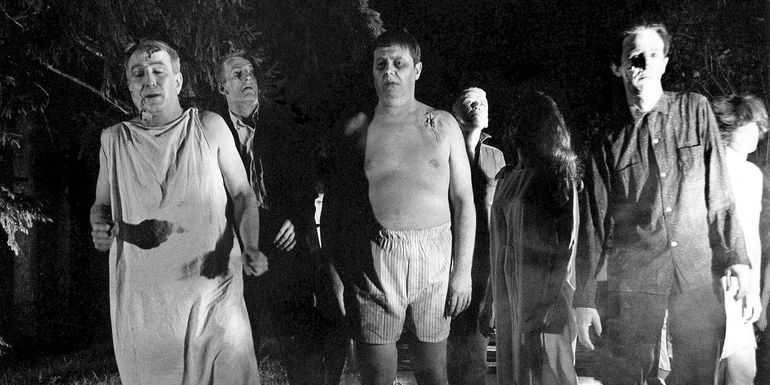
Top 10 Most Terrifying Black and White Horror Films You Must Watch

Explore the chilling world of black and white horror films that will send shivers down your spine. From eerie atmospheres to psychological terrors, these movies redefine the meaning of fear on screen.
1.The Eerie World of Monochrome Horror
Black and white horror films have a haunting allure that transcends time. Stripping away color, these movies rely on shadows and light to create spine-chilling atmospheres that linger long after the credits roll. From classic monsters to psychological terrors, the world of monochrome horror is a place where fear takes on a timeless quality.
2.The Sinister Presence of The Innocents
The Innocents stands as a pioneer in atmospheric horror. Directed by Jack Clayton, this film delves into the depths of dread as a governess uncovers sinister forces in a haunted house. With dim lighting and a sense of unease, The Innocents sets the stage for psychological terror that will keep you on the edge of your seat.
The film stars Deborah Kerr as the governess who becomes increasingly tormented by the supernatural occurrences in the house. The black and white cinematography enhances the eerie atmosphere, with shadows and lighting playing a crucial role in creating a sense of unease. The image of Deborah Kerr's terrified expression captures the unsettling nature of the film.
3.Invasion of the Body Snatchers: A Tale of Paranoia
Invasion of the Body Snatchers taps into the fear of the unknown with its tale of alien impostors infiltrating a small town. Directed by Don Siegel, this film captures the essence of 1950s paranoia and suspense without relying on jump scares. As residents lose their identities, the true horror unfolds in the shadows.
The black and white cinematography of Invasion of the Body Snatchers adds an extra layer of tension and unease to the narrative. The use of shadows and contrast enhances the sense of paranoia, as characters grapple with the terrifying realization that their loved ones have been replaced by emotionless duplicates. The image of Elizabeth and Matthew cowering in fear perfectly captures the sense of impending doom that permeates the film.
4.The Haunting: A Masterclass in Psychological Horror
Robert Wise's The Haunting takes viewers on a journey into the unknown with a team of paranormal investigators exploring the mysteries of Hill House. Through ominous sounds and mounting hysteria, this film builds tension without revealing the full horrors, leaving your imagination to conjure the darkest fears.
The black and white cinematography of The Haunting enhances the sense of claustrophobia and isolation that pervades the film. The use of shadows and lighting creates an eerie atmosphere, with the house itself becoming a character that elicits a sense of dread. The image of Eleanor and Theo in a tense moment perfectly captures the psychological horror that unfolds throughout the film.
5.Unraveling the Mind in Psycho
Alfred Hitchcock's Psycho delves into the depths of madness with its iconic shower scene and the chilling portrayal of Norman Bates. As the line between reality and psychosis blurs, Psycho delivers a psychological horror that feels all too real, making it a timeless classic in the genre.
The black and white cinematography of Psycho adds a layer of intensity and unease to the film. The contrasting shadows and lighting enhance the suspense and create a sense of unease as the audience is drawn into the mind of the disturbed protagonist. The image of Anthony Perkins as Norman Bates, surrounded by his taxidermy collection, perfectly captures the unsettling nature of the film.
6.Carnival of Souls: A Journey Into Madness
Herk Harvey's Carnival of Souls offers a surreal exploration of a woman's descent into madness after a near-fatal accident. Through disturbing imagery and a dreamlike tone, this indie classic proves that true horror lies in the depths of the mind, creating an unsettling experience that lingers long after the film ends.
The black and white cinematography of Carnival of Souls accentuates the nightmarish quality of the film. The use of shadows and contrast adds to the disorienting atmosphere, as the audience is plunged into the protagonist's unraveling psyche. The image of Mary looking on from the Carnival of Souls perfectly captures the eerie and otherworldly nature of the film.
7.Night of the Living Dead: The Birth of the Modern Zombie
George A. Romero's Night of the Living Dead redefined the zombie genre with its tale of flesh-eating undead besieging a farmhouse. Beyond the gore, this film delves into sociopolitical commentary, adding layers of depth to the horror and cementing its status as a timeless masterpiece.
The black and white cinematography of Night of the Living Dead adds a gritty and visceral quality to the film. The stark contrast between light and shadow heightens the sense of dread and impending doom as the characters fight for survival against the horde of zombies. The image of the zombies emerging from the darkness perfectly encapsulates the terrifying nature of the film.
8.Eraserhead: A Surreal Nightmare
David Lynch's Eraserhead takes viewers on a journey through a dystopian nightmare unlike any other. With its unsettling visuals and visceral body horror, this masterpiece delves into the darkness of the human psyche, leaving audiences haunted by its enigmatic storytelling.
The black and white cinematography of Eraserhead adds an extra layer of unease and discomfort to the film. The use of shadows and contrast enhances the sense of dread and disorientation, as the audience is immersed in the surreal and nightmarish world created by Lynch. The image of Jack Nance as Eraserhead leaning over something perfectly captures the surreal and disturbing nature of the film.
9.Seconds: A Reflection of Identity
Seconds challenges viewers to confront the ethical dilemmas of identity manipulation through a chilling narrative. John Frankenheimer's film immerses audiences in a world of disorientation and fear, blending sci-fi themes with Kafkaesque undertones that resonate with contemporary debates.
The black and white cinematography of Seconds enhances the sense of unease and disorientation that permeates the film. The use of shadows and lighting adds to the surreal and haunting atmosphere, as the protagonist's world unravels before their eyes. The image of Rock Hudson on a gurney perfectly captures the sense of identity crisis and existential dread that defines the film.
10.A Girl Walks Home Alone At Night: A Haunting Tale
Ana Lily Amirpour's A Girl Walks Home Alone At Night transforms the desolate streets of Bad City into a chilling landscape where a vampire stalks with cold hunger. Through silent tension and striking visuals, this film captures the essence of darkness and retribution, redefining the vampire genre.
The black and white cinematography of A Girl Walks Home Alone At Night adds a layer of mystery and elegance to the film. The use of shadows and lighting creates a sense of unease and anticipation, as the audience is drawn into the nocturnal world of the vampire. The image of two characters standing next to each other perfectly captures the haunting and atmospheric nature of the film.
11.The Lighthouse: A Descent Into Madness
Robert Eggers' The Lighthouse traps viewers on a remote island with two lighthouse keepers, plunging them into a world of isolation and terror. With haunting imagery and committed performances, this film explores the depths of madness and the unknown, making it a must-watch for lovers of psychological horror.
The black and white cinematography of The Lighthouse adds a sense of claustrophobia and foreboding to the film. The use of shadows and contrast enhances the sense of isolation and unease, as the audience is immersed in the desolate and unforgiving environment of the lighthouse. The image of Willem Dafoe and Robert Pattinson in a tense moment perfectly captures the descent into madness that unfolds throughout the film.


















